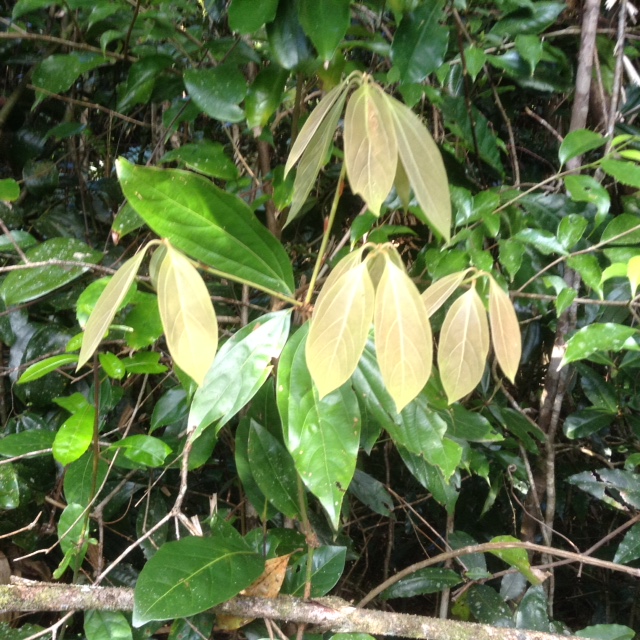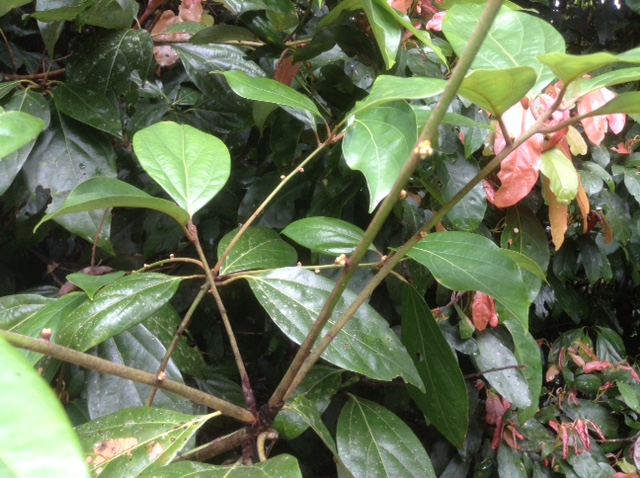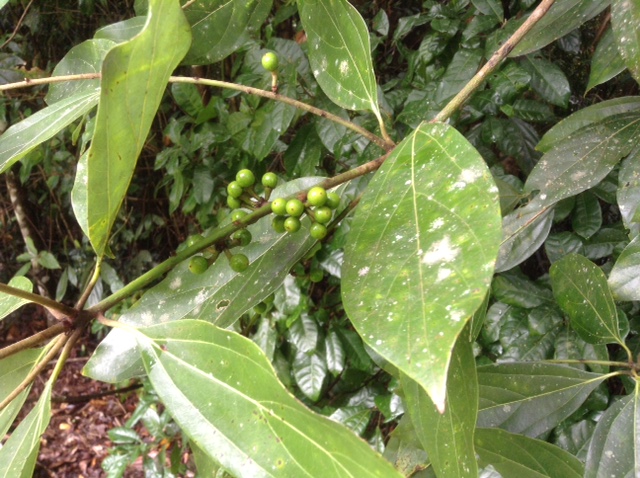WHITE BOLLYGUM Neolitsea dealbata
Approximately 80 species of Neolitsea are found in the rainforests of tropical Asia and Australasia. Three are found in Australia with two of these being found from the south coast of NSW to Cairns in Queensland. Neolitsea dealbata is a common under-storey tree growing to about twelve metres and is especially noticeable in spring when, soft drooping, pale new leaf growth appears, giving the tree a chandelier-festooned appearance. They are a member of the Lauraceae Family.

White Bollygum and the very similar Green Bollygum (Neolitsea australiensis) share many common names with species of the closely related Litsea. Being known by common names can be the cause of much confusion to a non-botanist, often leading to incorrect identification.
For example, some of the names Neolitsea dealbatais known by are: White Bollygum, Velvet-leafed Bollywood and Grey Bollywood, while Litsea australiensisis known as Green Bollygum. Across the species, Litsea and Neolitsea share common names of Grey Bollywood, Bollygum, Bollywood, White Bollygum and White Bollywood. It can be very confusing!
The name ‘dealbata’ derives from dealbatus, meaning ‘covered with white powder’. The underside of the leaves of this tree have a waxy coating which gives them a powdery, whitish bloom. Leaves are simple, between 80-220 mm x 35-85 mm in size and are clustered in groups of three or five. They are usually hairless on the upper side, but may be slightly hairy at the leaf base or along the mid-rib. Leaf twigs are clothed in white or pale brown hairs which may persist on mature twigs.
Perfumed flowers usually appear from March to July. These are tiny white or yellow clusters growing on branches or in leaf axils. They are so tiny, between pin head and match head size that they are almost unnoticeable. Male flowers are 2.4 mm, the female is only 1.7 mm.

The clusters of fruit which follow, from January to July, are small, 9 mm, globular drupes, (fleshy with seeds enclosed in a woody endocarp), containing one seed. The fruit goes from red to black when ripe and is relished by cassowaries.

There are many of these trees in and around Paluma, notably clustered in amongst many other trees in the Gumburu gardens and the forest edge outside Paluma Environmental Education Centre. They are easier to spot when new leaves appear, nevertheless the distinctive leaves make it easy to identify.
Text & Photos by Colwyn Campbell
